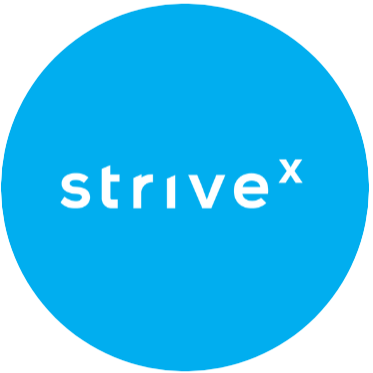Starting a business is one of the boldest decisions a person can make. It’s thrilling, yes — but also layered with complexity. From figuring out whether your idea has legs to navigating taxes, legal paperwork, and funding, the process can feel like juggling ten tasks with one hand tied behind your back. And that’s before you even open your doors.
But here’s the good news: when you’ve got a clear checklist to follow, that overwhelming feeling becomes a lot more manageable. At Swoop Funding, we work closely with small business owners every day, helping them gain the confidence to get started. So if you’re looking to start your journey with clarity and confidence, this guide could be your foundation.
Let’s walk through some important steps so you know exactly what needs to happen and when.
10 steps to starting a business
There’s no one-size-fits-all approach to launching a business, but most successful ventures follow a version of this core path.
1. Conduct market research
Before you spend a single dollar, spend time learning the landscape.
Who are your potential customers? What are their habits, needs, and pain points? Equally important — who else is serving them, and how? By exploring your target market and your competition, you’ll start to uncover your unique angle — the thing that makes you different and valuable.
Think of it as testing your idea against reality before fully committing. Tools like Google Trends, social media groups, and customer surveys are excellent places to start.
2. Write your business plan
A good business plan is more than a formality. It’s your playbook.
This document should clarify your mission, explain how your product or service solves a problem, outline your revenue model, and project your financial path. It also helps investors and lenders take you seriously.
Even if you’re not seeking outside funding, having this blueprint will keep you focused and make decision-making much easier down the road.
3. Fund your business
Unless you’re self-funding entirely, you’ll need capital to get moving, and that means choosing a financing route.
This might include small business loans, grants, crowdfunding, or support from friends and family. The right choice depends on your business model, growth plan, and risk tolerance.
Need help evaluating your options? Swoop connects founders with funding solutions tailored to their goals — from startup capital to working capital.
4. Pick your business location
Whether you’re opening a storefront, operating online, or doing both, your location impacts taxes, zoning rules, and legal requirements.
If you’re choosing a physical location, consider foot traffic, rent, proximity to suppliers, and accessibility. For online businesses, your “location” is often your home state, which still affects things like sales tax and LLC registration.
5. Choose a business structure
Your legal structure affects how you’re taxed, how much personal liability you carry, and how you’re allowed to raise money.
Some common structures include:
- Sole proprietorship – Simple and flexible, but no personal liability protection.
- LLC (Limited Liability Company) – A popular choice for small businesses, offering liability protection with minimal complexity.
Corporation (C-Corp or S-Corp) – More formal, with potential tax advantages and better access to capital.
If you’re unsure what fits, consulting with a small business attorney or CPA can help you avoid headaches later.
6. Choose your business name
This step is more than creative branding; it’s legal, too.
Once you’ve got a name you love, check for availability. Is the domain name open? Are the social handles taken? Is someone already using the name in your state or industry? Tools from your Secretary of State’s office or the U.S. Patent and Trademark Office can help.
It’s worth spending time here. Your name is the first thing people will remember or forget.
7. Register your business
Now it’s time to make things official.
This typically involves registering your business entity with your state, applying for a DBA (“Doing Business As”) if needed, and filing necessary paperwork locally. You may also need to register your name federally if you’re protecting a trademark.
The specifics vary depending on your state and business structure, but once this step is complete, you’re officially in business.
8. Get federal and state tax IDs
Your Employer Identification Number (EIN) from the IRS acts like a Social Security number for your business. You’ll need it to hire employees, open a business bank account, and file taxes.
Some states also require separate tax ID numbers, particularly if you sell goods or services subject to sales tax. Fortunately, both federal and state IDs are relatively quick to obtain online.
9. Apply for licenses and permits
Depending on what you do and where you do it, you may need one or more permits before operating.
These could include:
- Business operation licenses
- Health and safety permits
- Sales tax permits
- Home occupation permits
- Zoning clearance
Not sure what applies to you? Your local Small Business Development Center (SBDC) or city clerk’s office can help clarify.
10. Open a business bank account
Starting a business is a leap, but it doesn’t have to be a blind one. With Swoop, you can explore a range of business funding options in one place, from startup loans to working capital.
Not only that, our platform helps entrepreneurs streamline financial planning, compare solutions, and take next steps with confidence.
If you’re in the early stages and unsure where to begin — or you’re ready to launch but need help securing funds — we’re here to make the process smoother.
Check available business loans and discover what’s possible when you have the right support behind you.
How Swoop can help
Starting a non-CDL box truck business can be a great opportunity, but getting it off the ground might take more than hustle. At Swoop, we help entrepreneurs like you access capital, compare business loan options, and get personalized insights based on your unique needs.
Whether you’re trying to buy your first truck, fund equipment, or simply build working capital to get through your early months, our platform helps you move forward with clarity.
Ready to hit the road? Check available business loans with Swoop to explore your options and take the next step in launching your box truck business.













 yet? Register here!
yet? Register here!